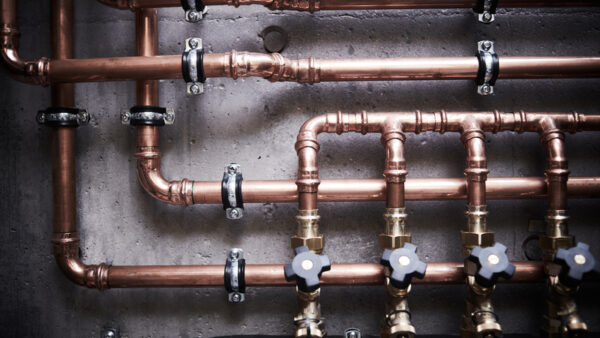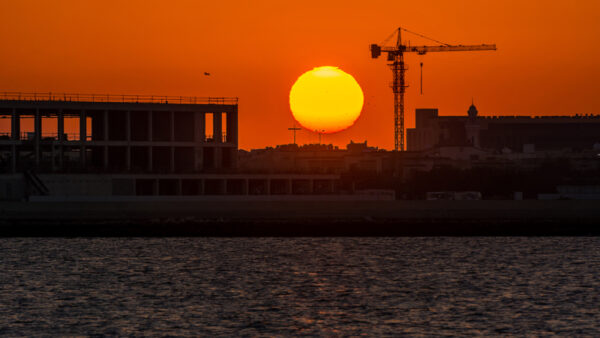Every so often, construction and civil engineering projects become politically radioactive. Russia’s project to construct a gas pipeline to Europe is a case in point. What makes the South Stream line different, however, is that there is little commercial reason to spend the vast amount of money required.
Adnan Vatansever, a senior lecturer at the Russian Institute of King’s College London, told GCR that the combination of political and commercial difficulties had made South Stream increasingly hard to justify.
“The European market for gas has been stagnating for some time and is expected to grow very slowly in the future,” he said. “The cost of South Stream looks like being much higher than $40bn because of the low level of efficiency of Russia’s pipeline industry, which has something to do with the lower level of transparency. And at present the pipeline network has about twice the capacity that is actually needed.”
He said it would be more sensible for Russia to arrive at a political agreement with the Ukraine in order to ensure the viability of the existing pipeline that travels over Ukrainian territory. “It would be more sensible than building an extremely expensive pipeline to a market that is not growing significantly.”
It seems, however, that the main driver behind the new pipeline is political, not commercial. If it is built, South Stream will take Russian gas under Turkish territorial waters in the Black Sea, through Bulgaria, Serbia and Slovenia to Austria.
At present, Russia provides a quarter of the natural gas consumed in the EU, and about 80% of that travels across Ukrainian soil. South Stream would bypass the Ukraine, and therefore make it possible for Russia to cut off that country’s gas without also halting supplies to Europe. Russia is particularly keen to avoid suspending supplies to friendly countries such as Bulgaria, which are dependent on Russian energy.Â
Russia “weaponised” its gas in a previous dispute with the Ukraine; in 2006 it halted supplies entirely after a bitter row over Kiev’s debts to Gazprom, and claims that the Ukraine was siphoning off gas intended for downstream countries. It was probably not a coincidence that the idea of the pipeline was proposed in 2007. Gazprom doubled the price of Kiev’s gas after the ejection of pro-Russian president Viktor Yanukovych in February. The Ukraine’s arrears presently stand at something like $4.5bn.
The US and northern Europe are anxious to prevent South Stream being built precisely because of the increased leverage it would give Russia over the Ukraine. The European commission has objected on the grounds that the pipeline breaches EU competition law. Gazprom owns both the pipeline and the gas, contrary to EU rules on separating infrastructure and operating companies.
The weak pointÂ
The West scored a victory last month when it cajoled Bulgaria into suspending its work on the line, citing the competition rules and also the fact that a company involved in the construction work in Bulgaria is subject to US sanctions. But Ekaterina Shumitskaya, a researcher at the Russian Academy of Sciences, told Pravda TV that Bulgaria was the political weak point in pipeline. She said if the EU continued to pressurise that country, work would probably move to Turkey.
Vatansever was sceptical that the Turkish option would work. He said: “There is already a pipeline to Turkey, the Blue Stream, and even if it went through there it would still have to enter Europe in Bulgaria or Greece.”
Russia’s ITAR-TASS agency yesterday quoted Alexander Novak, Russia’s energy minister, as saying the construction of South Stream in Bulgaria would soon be resolved. He said: “The Bulgaria issue is of a working nature, it is being discussed, resolved between companies who established a joint venture company on the project and are conducting further operations to choose contractors.” He added that he hoped “everything will be okay and the project will be implemented in strict accordance with the schedule”.
The companies with a commercial stake in the scheme are Italy’s ENI, Électricité de France, and Germany’s Wintershall. The vehicle formed to carry out the work, South Stream Transport, is 50% owned by Gazprom; ENI owns 20% of the shares and the other two firms own 15% each.Â
The dispute over South Stream has split the member states of the EU, with southern countries – who stand to benefit from the scheme – generally in favour and northern countries opposed. Federica Guidi, Italy’s economic development minister, said: “Italy will continue to support South Stream, which is among strategically important infrastructure projects. South Stream further strengthens the existing gas supply network.” Â
How will it turn out?
The outcome of the South Stream battle may have far reaching consequences for all the contestants. The EU, with its control over Bulgaria and its backing from the US, seems to be in the stronger bargaining position at the moment but, as Dr Vatansever points out, it will only take a cold winter to put Russia in the driving seat.Â
“The EU is talking about diversifying its gas supply, but it’s not something that can be accomplished in a short period of time,” he said. “If there is a cold winter then you end up paying much higher prices for liquid natural gas or you have to get as much as possible from Russia.”
The political split between the southern states and the EU’s central institution may also have consequences down the line, particularly in those countries such as Bulgaria that feel bruised by their treatment by Brussels. The Ukraine may also have to seek compromise with Russia, and may also have to reorganise its internal market. Vatansever says the gas industry is heavily subsidised, which means that Ukraine’s Naftogas has constantly either to seek government bail-outs or run up debts to Gazprom.
“It’s very hard to predict what will happen in the pipeline business. Some of lines survive, some of them you talk for 10 years and nothing turns up,” Vatansever said. “It does seem that Russia is very dedicated to finalising the project. If the politics become more positive then there is more chance it will be done, but there are a lot of political issues that are going to remain on the agenda to do with the EU’s competition law and network rules.
“It’s not going to be completed by next year. Typically with pipeline projects the targets are very ambitious. The only exception is a pipeline between Turkmenistan to China, but that’s often the case with projects where the Chinese are involved – they are usually accomplished much faster.” Â
South Stream: some facts
If and when it is completed, South Stream will have a total length of 2,506km, making it the seventh longest in the world. It will run from Nizhny Novgorod, about 400km east of Moscow, to the Russkaya compressor plant near the Caucasus port of Krasnodar, and from there it will run about 2km below the surface of the Black Sea to the Bulgarian port of Varna, a distance of about 900km. The annual design capacity is 63 billion cubic meters, delivered by 10 compressor stations which will require 1,516 MW (enough to power about 500,000 homes). According to the original schedule, the first supplies of gas via the gas pipeline are due in late 2015.






